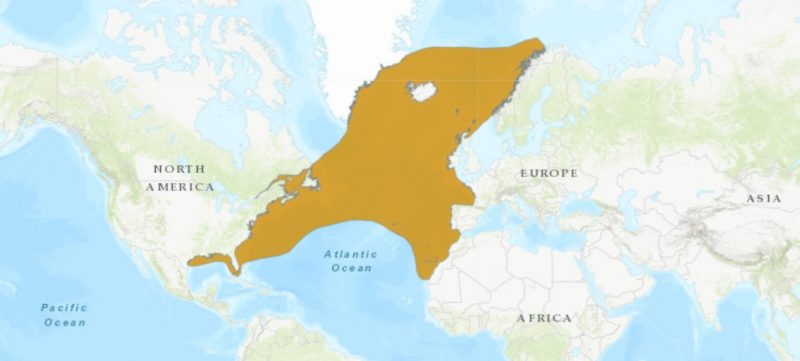
There’ve been stories in recent years about whales’ sensitive hearing being harmed by human sounds in the ocean. Now comes a story about using the whales’ own sounds to protect them. The North Atlantic right whale is one of the most endangered whale species on Earth. Entanglement in fishing gear and vessel strikes are their leading causes of death. Scientists from the University of East Anglia in Norwich, England, have developed a technology that lets machines distinguish between the sounds right whales make and the sounds of other sea-going activities such as shipping, fishing and drilling. The development, announced June 3, 2021, will let the whales be detected before they get too close to, for example, large ships.
The scientists said they hope their work can protect whales, as well as prevent costly shutdowns of offshore operations.
The study was published June 3 in the peer-reviewed journal The Journal of the Acoustical Society of America.
Listening for the North Atlantic right whale
A North Atlantic right whale – the scientific name is Eubalaena glacialis – can weigh up to 70 tons and grow to 55 feet (16 m) in length. Curiously, the whales appear to be smaller now than they were 40 years ago. Scientists believe entanglement in fishing gear is the reason. Scientists want to locate the whales before they get too close to fishing nets or ships, so people can maneuver to avoid them.
With only around 350 North Atlantic right whales remaining, and only about 100 females of breeding age, the situation is dire.
The scientists said their new techniques can remove unwanted noises of human activity from undersea recordings. That should result in more reliable detections of right whales. Currently, people have to detect whales visually. That’s not possible at night or in poor seeing conditions. Ben Milner of the University of East Anglia is lead researcher of the study. He said the new technology provides hope that right whales will now survive some situations that once would have been fatal. He explained:
The aim of this work is to develop robust methods of detecting marine mammals from passive acoustic monitoring devices in challenging environments. Having the ability to deploy an automated system – whether it be on buoys, Autonomous Surface Vehicles, or gliders – that can achieve high levels of detection in real-time, is vital to the long-term future of right whales.
Being able to reliably detect marine mammals is important for population monitoring and for mitigation, as many species are endangered and protected by environmental laws.

Human and humane cooperation
Scientists hope that with the new technology, they can find right whales when they’re approaching dangerous situations.
The next step would be to alert nearby shipping and offshore ventures, asking them to change course or pause activities. Regulations currently in place prohibit approaching or remaining within 500 yards (457 m) of a right whale.

The sounds of right whales
North Atlantic right whales make a variety of sounds. Scientists describe the most common vocalization as an upcall tone, made by both sexes and all ages as a social form of communication between the animals. Upcall tones are the sound most often used by scientists for acoustic detection of the species. A second common vocalization is a gunshot sound that scientists describe as an impulse that might be used to ward away other males. Scientists can also detect these sounds with the new technology.
North Atlantic right whale sounds are in low frequency regions and difficult for spectograms to detect when the whales are in high-traffic regions with passing ships, drilling and piling activities, seismic exploration or interference from other marine mammals, such as a humpback whale song. Overlapping noises makes it difficult for scientists to pull out the presence of the right whale.
So the ‘de-noising’ processes that could block out non-whale noises from trawlers, tankers and other human activities is a big step forward in protecting these endangered animals.

Bottom line: Scientists have managed to separate the noise of marine activities from noises of the endangered North Atlantic right whale to help locate them and possibly avoid fatal conflicts.
Source: Robust North Atlantic right whale detection using deep learning models for denoising











